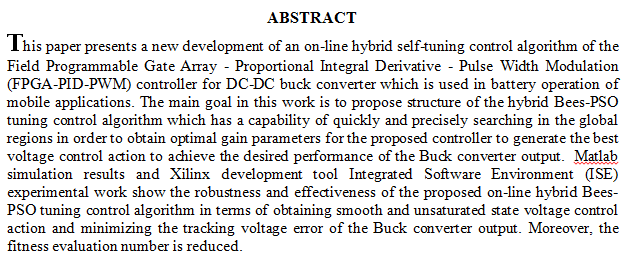
The migration from IPv4 to IPv6 can not be achieved in a brief period, thus both protocols co-exist at certain years. IETF Next Generation Transition Working Group (NGtrans) developed IPv4/IPv6 transition mechanisms. Since Iraq infrastructure, including universities, companies and institutions still use IPv4 protocol only. This research article tries to highlight, discuss a required transition roadmap and extend the local knowledge and practice on IPv6. Also, it introduces a prototype model using Packet tracer (network simulator) deployed for the design and implementation of IPv6 migration. Finally, it compares and evaluates the performance of IPv6, IPv4 and dual stack using OPNET based on QoS metrics such as throughput, delay and point to
... Show More (1)
(1)
Individual cannot live alone due to to his need for others to facilitate His supplies for living, thus social affiliation is considered one of the most important psychological, social needs in individuals life through his willing to affiliate to others whether they were friends ,family, colleague , or even home to reach some degree of psychological stability.
Affiliation is a tool to search for Satiate through living with group from the same type or comply for group or to be compatible with them or even to be adherent and accept what the group agreed about of criterion.
 
... Show More (5)
(5)
 (3)
(3)
Today, problems of spatial data integration have been further complicated by the rapid development in communication technologies and the increasing amount of available data sources on the World Wide Web. Thus, web-based geospatial data sources can be managed by different communities and the data themselves can vary in respect to quality, coverage, and purpose. Integrating such multiple geospatial datasets remains a challenge for geospatial data consumers. This paper concentrates on the integration of geometric and classification schemes for official data, such as Ordnance Survey (OS) national mapping data, with volunteered geographic information (VGI) data, such as the data derived from the OpenStreetMap (OSM) project. Useful descriptions o
... Show MoreSolar hydrogen line emission has been observed at the frequency of 1.42 GHz (21 cm wavelength) with 3m radio telescope installed inside the University of Baghdad campus. Several measurements related to the sun have been conducted and computed from the radio telescope spectrometer. These measurements cover the solar brightness temperature, antenna temperature, solar radio flux, and the antenna gain of the radio telescope. The results demonstrate that the maximum antenna temperature, solar brightness temperature, and solar flux density are found to be 970 K, 49600K, and 70 SFU respectively. These results show perfect correlation with recent published studies.
 (9)
(9)
 (5)
(5)
The electrocoagulation process became one of the most important technologies used for water treatment processes in the last few years. It’s the preferred method to remove suspended solids and heavy metals from water for treating drinking water and wastewater from textile, diary, and electroplating factories. This research aims to study the effect of using the electrocoagulation process with aluminum electrodes on the removal efficiency of suspended solids and turbidity presented in raw water and optimizing by the response surface methodology (RSM). The most important variables studied in this research included electrode spacing, the applied voltage, and the operating time of the electrocoagulation process. The samples
... Show More (3)
(3)
 (3)
(3)
 (3)
(3)
Ultimate oil recovery and displacement efficiency at the pore-scale are controlled by the rock wettability thus there is a growing interest in the wetting behaviour of reservoir rocks as production from fractured oil-wet or mixed-wet limestone formations have remained a key challenge. Conventional waterflooding methods are inefficient in such formation due to poor spontaneous imbibition of water into the oil-wet rock capillaries. However, altering the wettability to water-wet could yield recovery of significant amounts of additional oil thus this study investigates the influence of nanoparticles on wettability alteration. The efficiency of various formulated zirconium-oxide (ZrO2) based nanofluids at different nanoparticle concentrations (0
... Show More (49)
(49)
 (36)
(36)
Due to the high mobility and dynamic topology of the FANET network, maintaining communication links between UAVs is a challenging task. The topology of these networks is more dynamic than traditional mobile networks, which raises challenges for the routing protocol. The existing routing protocols for these networks partly fail to detect network topology changes. Few methods have recently been proposed to overcome this problem due to the rapid changes of network topology. We try to solve this problem by designing a new dynamic routing method for a group of UAVs using Hybrid SDN technology (SDN and a distributed routing protocol) with a highly dynamic topology. Comparison of the proposed method performance and two other algorithms is simula
... Show More (19)
(19)
 (4)
(4)
Human Interactive Proofs (HIPs) are automatic inverse Turing tests, which are intended to differentiate between people and malicious computer programs. The mission of making good HIP system is a challenging issue, since the resultant HIP must be secure against attacks and in the same time it must be practical for humans. Text-based HIPs is one of the most popular HIPs types. It exploits the capability of humans to recite text images more than Optical Character Recognition (OCR), but the current text-based HIPs are not well-matched with rapid development of computer vision techniques, since they are either vey simply passed or very hard to resolve, thus this motivate that
... Show More (5)
(5)
